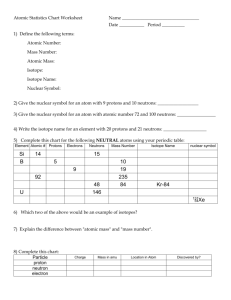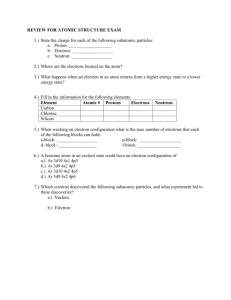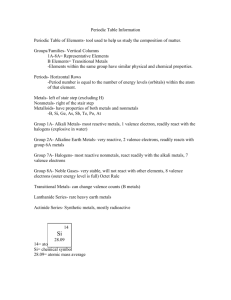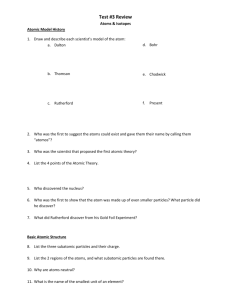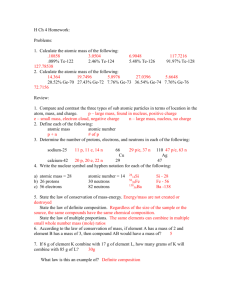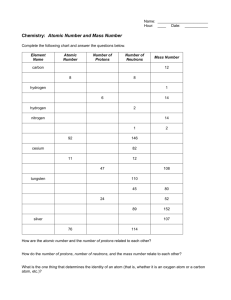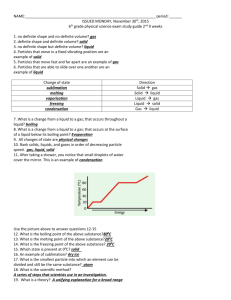Practice Questions-Chemistry Set 1
advertisement
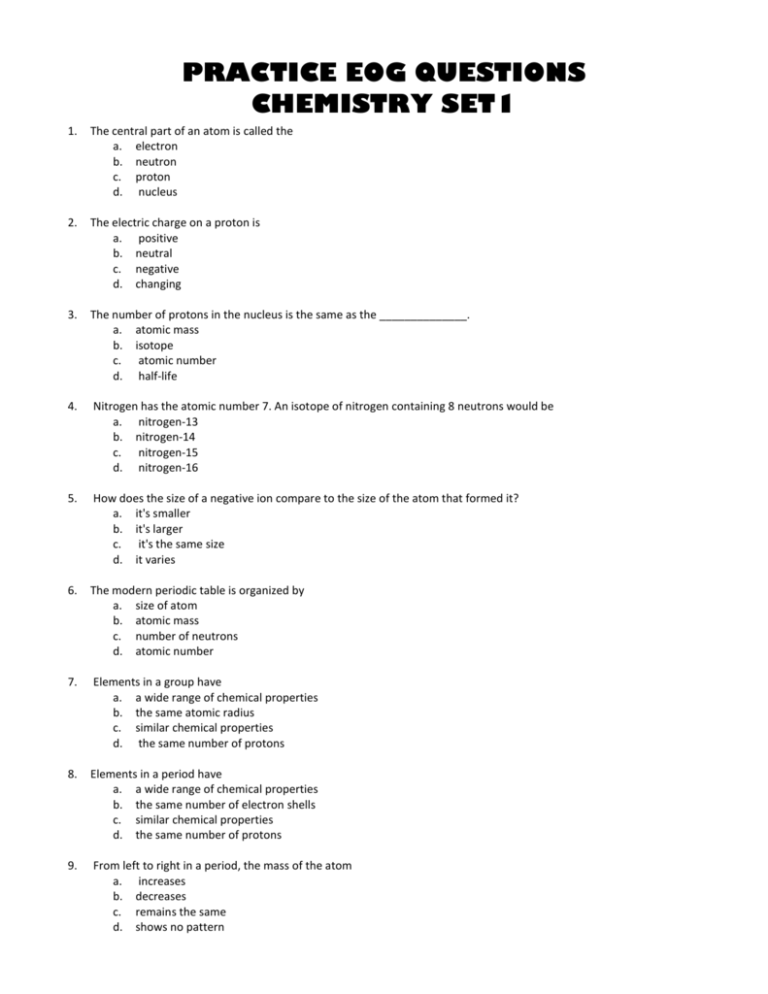
PRACTICE EOG QUESTIONS CHEMISTRY SET1 1. The central part of an atom is called the a. electron b. neutron c. proton d. nucleus 2. The electric charge on a proton is a. positive b. neutral c. negative d. changing 3. The number of protons in the nucleus is the same as the ______________. a. atomic mass b. isotope c. atomic number d. half-life 4. Nitrogen has the atomic number 7. An isotope of nitrogen containing 8 neutrons would be a. nitrogen-13 b. nitrogen-14 c. nitrogen-15 d. nitrogen-16 5. How does the size of a negative ion compare to the size of the atom that formed it? a. it's smaller b. it's larger c. it's the same size d. it varies 6. The modern periodic table is organized by a. size of atom b. atomic mass c. number of neutrons d. atomic number 7. Elements in a group have a. a wide range of chemical properties b. the same atomic radius c. similar chemical properties d. the same number of protons 8. Elements in a period have a. a wide range of chemical properties b. the same number of electron shells c. similar chemical properties d. the same number of protons 9. From left to right in a period, the mass of the atom a. increases b. decreases c. remains the same d. shows no pattern 10. The elements in Group 1 of the periodic table are commonly called the a. alkali metals b. transition metals c. alkaline earth metals d. rare earth metals 11. The isotope nitrogen-13 has a half-life of 10 minutes. If you start with 40 grams of this isotope, how many grams will you have left after twenty minutes? a. 10 b. 15 c. 20 d. 30 12. What does the number above the symbol for each element represent? a. the number of isotopes b. its atomic number c. its number of neutrons d. its atomic mass 13. The atom of what element is in Period 4, Group 13? a. Na b. Ga c. Al d. K 14. What do the elements on the far right of the table (He, Ne, Ar, and Kr) have in common? a. They do not generally react with other elements b. They are liquid in normal conditions c. They are metals that rust easily d. They are very reactive gases 15. How many electrons does a neutral chlorine (Cl) atom contain a. 16 b. 17 c. 18 d. 19 16. When Calcium loses an electron it will then become ______________. a. An anion with a charge of -1 b. An anion with a charge of +1 c. A cation with a charge of -1 d. A cation with a charge of +1 17. What is true about elements in the same group? a. They have the same number of valence shells b. They have the same number of valence electrons c. They are all the same size d. They have very different chemical properties 18. A. Calculate the atomic mass of the mystery element that has 19 protons, 20 neutrons & 19 electrons. B. What is the name of this mystery element? 19. What are the 3 main sections or “kingdoms” on the periodic table? 20. Why do elements want to bond to become molecules or compounds? 21. What is a valence electron?



